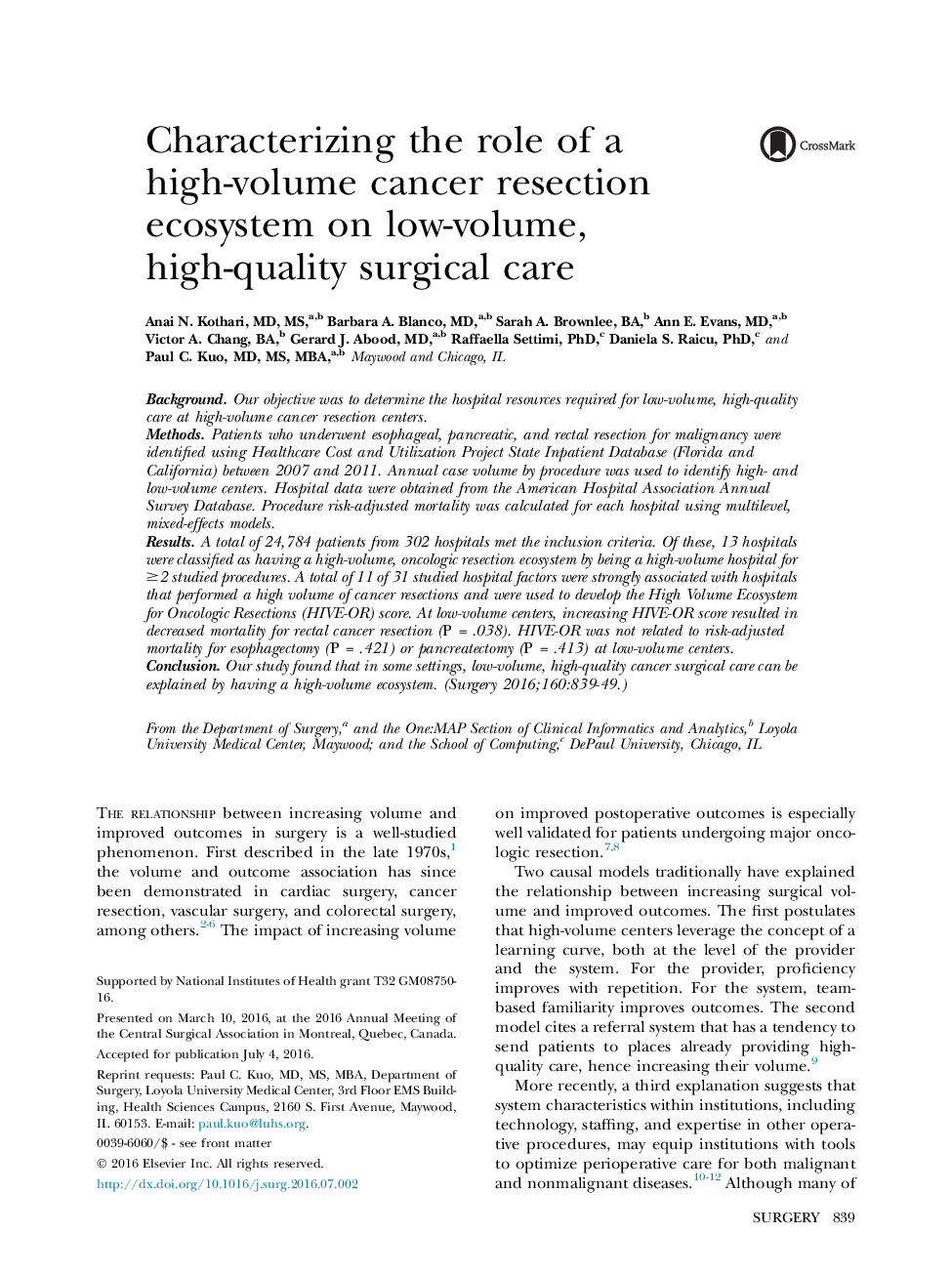| Article ID | Journal | Published Year | Pages | File Type |
|---|---|---|---|---|
| 4306334 | Surgery | 2016 | 11 Pages |
BackgroundOur objective was to determine the hospital resources required for low-volume, high-quality care at high-volume cancer resection centers.MethodsPatients who underwent esophageal, pancreatic, and rectal resection for malignancy were identified using Healthcare Cost and Utilization Project State Inpatient Database (Florida and California) between 2007 and 2011. Annual case volume by procedure was used to identify high- and low-volume centers. Hospital data were obtained from the American Hospital Association Annual Survey Database. Procedure risk-adjusted mortality was calculated for each hospital using multilevel, mixed-effects models.ResultsA total of 24,784 patients from 302 hospitals met the inclusion criteria. Of these, 13 hospitals were classified as having a high-volume, oncologic resection ecosystem by being a high-volume hospital for ≥2 studied procedures. A total of 11 of 31 studied hospital factors were strongly associated with hospitals that performed a high volume of cancer resections and were used to develop the High Volume Ecosystem for Oncologic Resections (HIVE-OR) score. At low-volume centers, increasing HIVE-OR score resulted in decreased mortality for rectal cancer resection (P = .038). HIVE-OR was not related to risk-adjusted mortality for esophagectomy (P = .421) or pancreatectomy (P = .413) at low-volume centers.ConclusionOur study found that in some settings, low-volume, high-quality cancer surgical care can be explained by having a high-volume ecosystem.
